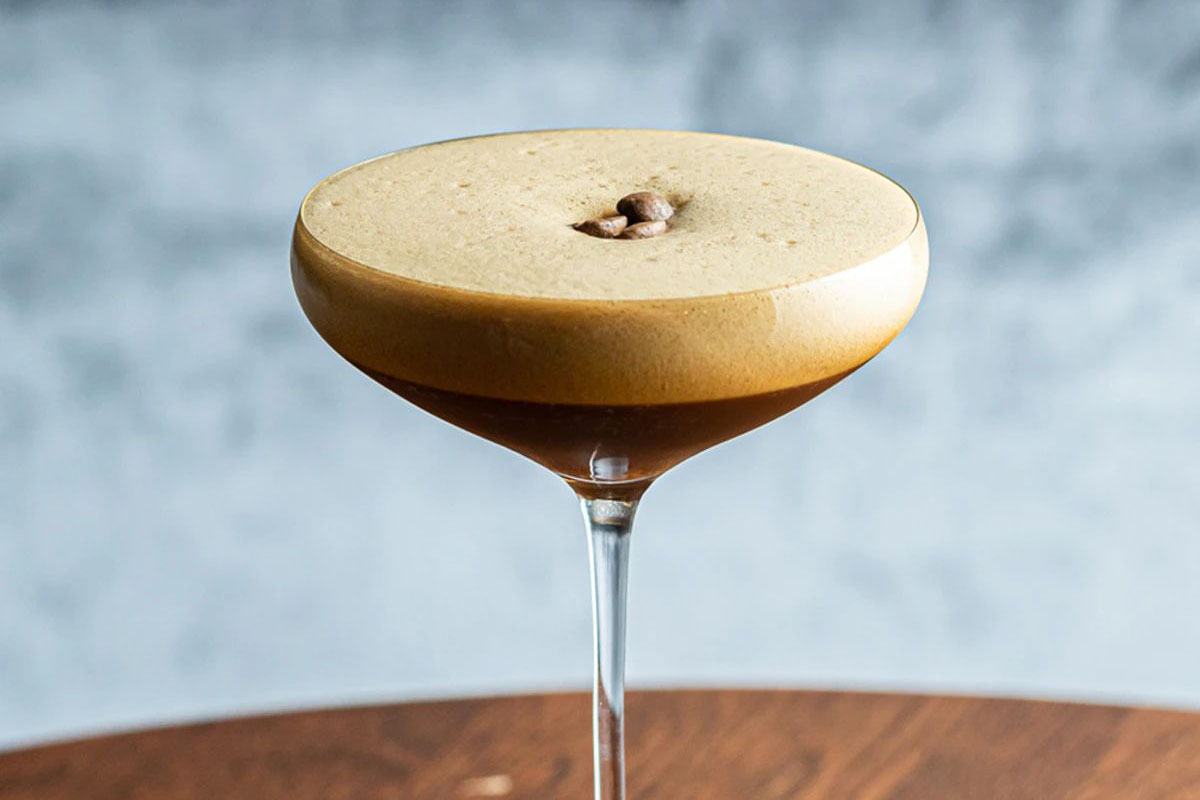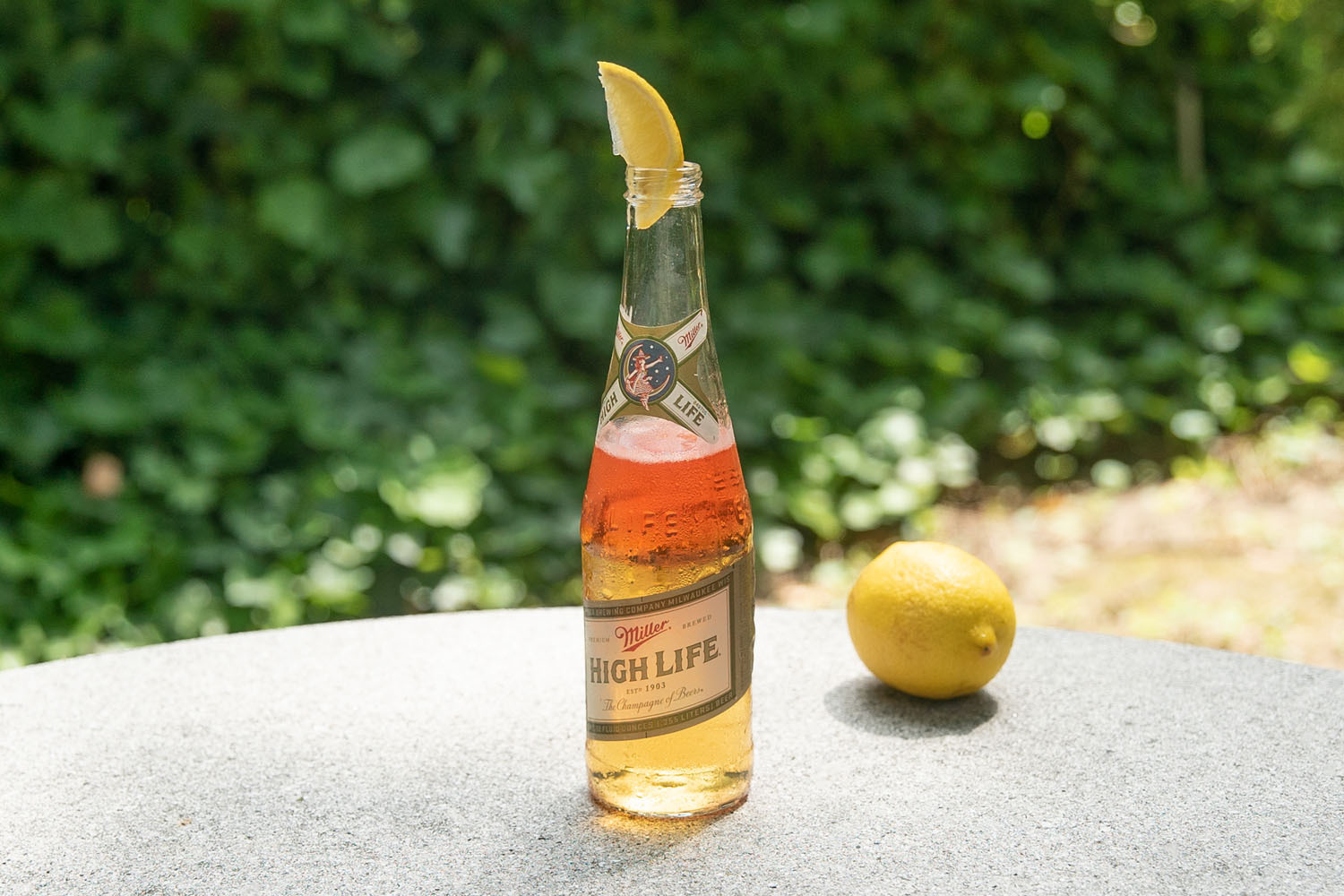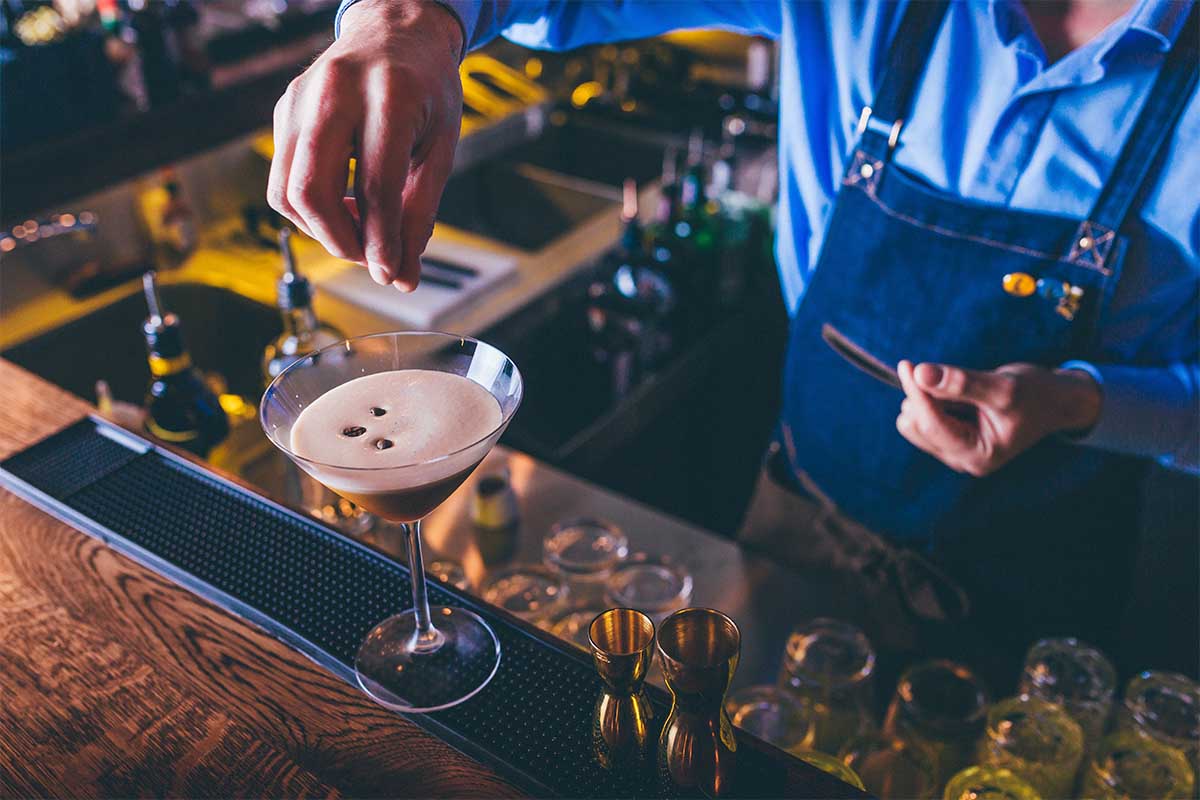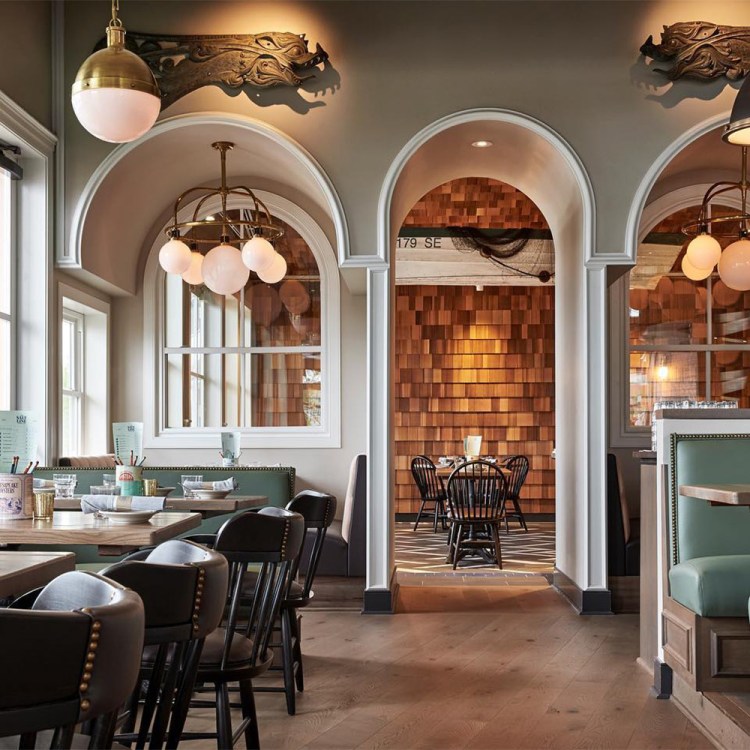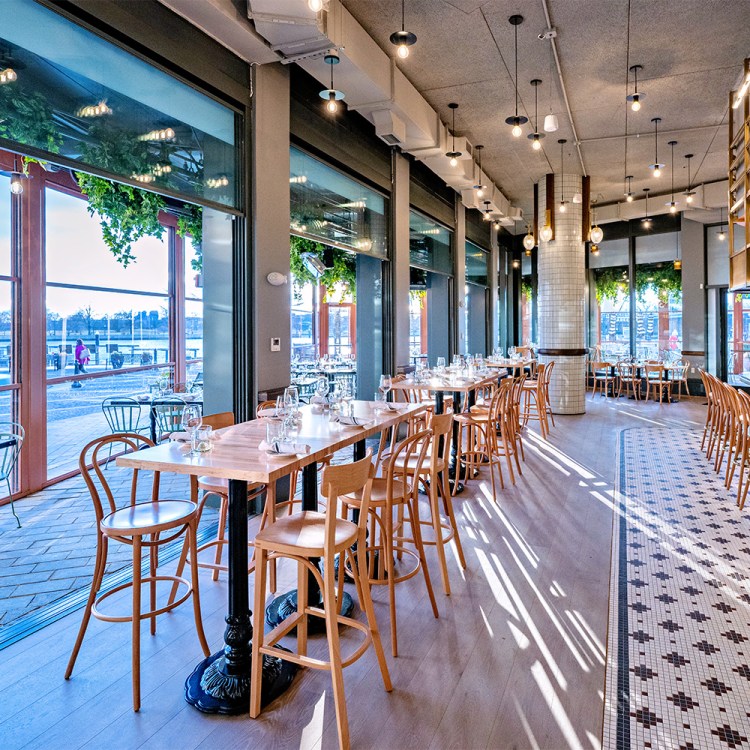First it was the negroni. Next, the spritz. Then it seemed the espresso martini was the must-have on any cocktail menu, with a nostalgic appeal as evocative of the ’90s as wired headphones and Friends reruns. But while an espresso martini is certainly a good way to bring a caffeine- and sugar-laced jolt to your system on a night out, it turns out that some of the most intriguing crossovers between the world of cocktails and the world of coffee are best enjoyed first thing in the morning.
Ayat Elhag is the coffee director of Navy Yard’s Yellow, a Levantine cafe where, in addition to the turmeric honey or dirty chai lattes third-wave coffee fans know well, she offers new, enticing creations born of her own imagination. The Arnold Rafidi is a sparkling espresso tonic with a charred lemon simple syrup. The Dakwa Dalgona tops a peanut orgeat-infused iced latte with cold coffee foam.
Cocktail-esque coffees for the pre-noon crowd make sense, not just because of the wealth of possibilities, but because despite their current popularity, espresso martinis are far from most bartenders’ cup of tea.
“I don’t like to make espresso martinis, because you have to make the espresso, which is a hot item going into a cold cocktail, which affects the dilution,” says Judy Elahi, bar director of 101 Hospitality (Gravitas, Michele’s and Baker’s Daughter). “You have to then run the shaker through the dishwasher because there are coffee grounds in it, and the aroma stays in the shaker.”
While Elahi has found ways to combat these problems — namely, using instant espresso — flipping the script and lending cocktail techniques to the world of coffee is a far more interesting prospect.
For Elhag, one of the key benefits is texture. Tonic, after all, adds a light effervescence and brightness to iced coffee, while shaken drinks can take on a lovely richness.
“I had a non-alcoholic espresso beverage from a shop in Asheville, North Carolina, that was a shaken espresso with jasmine syrup and pear juice,” Elhag recalls. Not only did the drink foam in a very similar way to an espresso martini, but, she explains, it imparted “a creamy drinking experience without any dairy.”
Elhag puts the same logic to the test when crafting her own coffee beverages. Her coconut cardamom iced coffee tops a black-coffee base with a coconut foam that, she says, “dissipates into the beverage as it sits.” “The addition of the aerated coconut cream adds a really nice texture to the beverage,” she adds, “a little more viscosity than just iced coffee, but still super light on the palate.”
The coffee itself — carefully sourced from Counter Culture — is, of course, a core piece of the puzzle. Techniques gleaned from the cocktail world can help highlight the bean’s natural flavors and the aromas of the roast.
“I think with coffee you can take that nuance further, once you start to take proper extraction into account,” explains Elhag. “Different beans can make the same drink taste different.” The espresso-jasmine-pear drink she tried, for instance, “is a wonderfully fruity way to drink a bright bean.”
When Yellow Georgetown opens this fall, Elhag will expand her list of nightlife-influenced coffees even further, featuring, for instance, draft lattes like honey halva or baklava mocha. And as more and more craft coffee shops embrace the trend, she’s ready to reap the benefits.
“I think that baristas and coffee programs, in general, are getting so much more adventurous with their specialty drinks,” she says. “I am incredibly excited to see what the D.C. craft coffee scene is creating and learn about their thought processes behind why they think their drink is delicious — which it usually is.”
This article was featured in the InsideHook DC newsletter. Sign up now for more from the Beltway.

